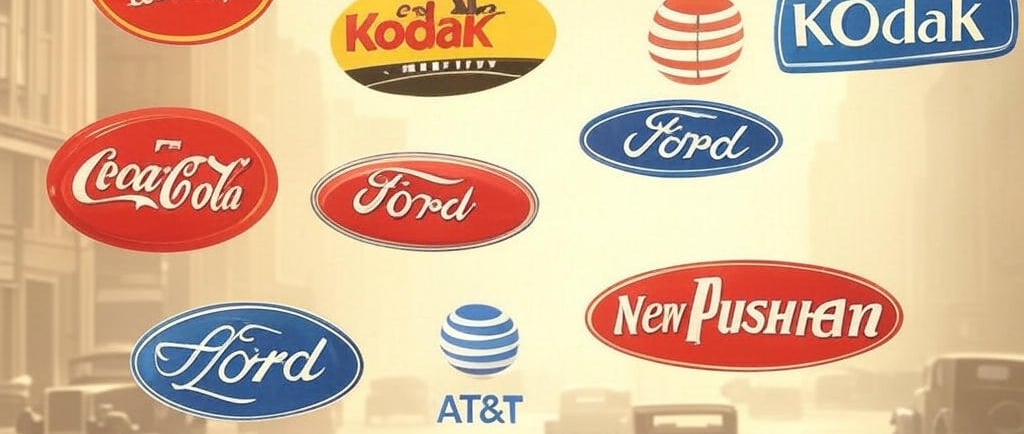How Brands Grow by Byron Sharp: Key Insights and Modern Marketing Applications
Discover the science behind brand growth with Byron Sharp’s groundbreaking research. Learn why market penetration, not loyalty, drives success — and how mental and physical availability can transform your brand's future. A must-read guide for modern marketers!
MARKETING DECODEDRESEARCH PAPERS DECODED
ThinkIfWeThink
4/22/20254 min read


Decoding How Brands Grow by Byron Sharp: A Modern Guide for Marketers
Why You Should Read This Paper
If you've ever questioned why brand loyalty campaigns often underperform or why broad-reach advertising still dominates, Byron Sharp’s How Brands Grow provides the science-backed answers you've been seeking.
This research dismantles popular myths, proving that brand growth hinges on penetration — not loyalty — and showing marketers how to truly scale in today's competitive landscape.
If you're tired of marketing guesswork, Sharp’s work gives you a data-driven playbook to allocate resources where they actually matter.
Introduction
How Brands Grow challenges decades of conventional marketing wisdom.
Through empirical research, Byron Sharp and the Ehrenberg-Bass Institute demonstrate that brands grow by acquiring light, infrequent buyers, not by focusing on heavy loyalists.
The secret?
Maximizing mental availability (being top of mind) and physical availability (being easy to buy across channels).
This work debunks myths like the supremacy of niche marketing and exposes the universality of buyer behavior laws — such as the Double Jeopardy Effect.
Summary of the Original Paper
How Brands Grow is based on decades of empirical research by Byron Sharp and the Ehrenberg-Bass Institute.
The paper — and the broader book — systematically debunks common marketing myths and introduces universal marketing laws based on real-world buying behavior.
Here are the core findings and ideas:
Brands grow by reaching more people — not by increasing loyalty:
Sharp shows that market share is largely determined by how many people buy your brand occasionally, rather than building a base of super-loyal customers.The Double Jeopardy Effect:
Smaller brands don't just have fewer customers — they also suffer from lower loyalty levels.
It’s not a branding failure — it’s a natural market phenomenon.Light Buyers Matter More Than Heavy Buyers:
Around 50%–80% of a brand’s sales come from people who buy it very infrequently.
Heavy users exist — but focusing only on them shrinks a brand’s potential reach.Mental Availability Drives Choice:
Brands that are easier to remember (through logos, taglines, brand colors, emotional hooks) are more likely to be chosen at the point of purchase.Physical Availability Amplifies Sales:
Distribution — being available across multiple buying situations and touchpoints — matters just as much as mental recall.
If buyers can’t find you easily, they’ll choose someone else.All Buyers Are Polygamous:
Consumers regularly switch between brands even when they have favorites. Loyalty is relative, not absolute.Distinctive Brand Assets Are Critical:
Creating and protecting simple, recognizable elements (like Coca-Cola’s red and white, McDonald’s golden arches) help brands build mental availability quickly and memorably.
Evidence Across Industries:
Sharp’s research draws from massive data sets across FMCG (fast-moving consumer goods), airlines, banking, and entertainment, showing that these patterns repeat across virtually every industry.
Example:
Coca-Cola’s dominance isn't fueled by daily superfans — it’s built by millions of occasional sippers choosing Coke over alternatives.
Famous Quotes from the Paper
"Brand growth comes from increasing market penetration, not customer loyalty."
(— Byron Sharp)
"Competition isn’t just your direct rivals — it’s every brand vying for a buyer’s momentary attention."
(— Byron Sharp)
Why It Matters Today
In today’s hyper-fragmented, digital-first world, Sharp’s lessons are more urgent than ever:
Digital Myopia:
Brands that chase tiny niche audiences risk missing the broader market.Sustainable Growth:
Viral superfans can create spikes — but only broad appeal sustains scale.E-Commerce Expansion:
"Physical availability" now includes seamless digital presence — from Amazon listings to TikTok Shops.
Sharp’s evidence forces marketers to think bigger and broader — because growth demands visibility at scale, not tribal devotion.
Key Concepts Explained Simply
Double Jeopardy Effect:
Small brands suffer two disadvantages: fewer customers and lower loyalty.
(Not because they’re worse — just market math.)Mental Availability:
Being easy to recall in buying moments — through memorable logos, colors, slogans, and consistency.Physical Availability:
Being easy to buy — available at the right place, time, and format for customers.
Example:
McDonald's isn't just about burgers — it's about being instantly recognizable and available on almost every major street corner globally.
Real-World Applications and Examples
Dollar Shave Club:
Disrupted Gillette by appealing to light buyers through humorous advertising (mental availability) and by offering easy subscriptions (physical availability).Netflix vs. Movie Theaters:
Netflix made entertainment physically available at home, converting casual moviegoers into consistent streamers.
Quick Modern Update
In 2025, AI helps optimize mental availability with hyper-personalized ads, and D2C brands like Glossier leverage Instagram and TikTok shops to maximize physical reach.
But Sharp’s core truth holds: you win by reaching passive, casual buyers — not by creating isolated "tribes."
5 Quick Reflection Questions
Does your branding make sense to someone seeing your brand for the first time?
Are you easier to buy than your competitors, across both online and offline touchpoints?
What distinctive brand assets (logos, sounds, taglines) do you consistently reinforce?
Are you prioritizing broad reach instead of narrow hyper-targeting in your campaigns?
What obstacles (like a hard-to-use website) are quietly costing you casual buyers?
Key Takeaways or Action Points
✅ Focus on Light Buyers: Allocate 70%+ of your marketing budget toward reaching new customers.
✅ Audit Your Availability: Regularly map where and how customers can discover and buy you.
✅ Protect Your Distinctive Assets: Trademark and consistently use key brand visuals and slogans.
✅ Simplify Messaging: Speak clearly so even occasional buyers instantly understand your value.
✅ Measure Market Penetration: Don’t just track loyalty — track customer acquisition rates.
Short Opinion
Sharp’s evidence-backed model is a necessary reality check for modern marketers.
However, today’s community-driven brands like Gymshark suggest that niche loyalty can complement broad reach — when done smartly.
Future research could explore hybrid brand-building models that blend Sharp’s mass-reach fundamentals with targeted community activation.
Where to Read the Full Paper
Book: How Brands Grow by Byron Sharp — Available via Oxford University Press and major bookstores.
Research: Ehrenberg-Bass Institute website provides summaries and case studies applying these laws across industries.
Final Thought:
In a world of infinite choices, being easy to notice and easy to buy isn’t just a marketing trick — it’s survival.

Get in touch
Learn
Explore topics made easy for everyone here.
Share
© 2025. All rights reserved.
